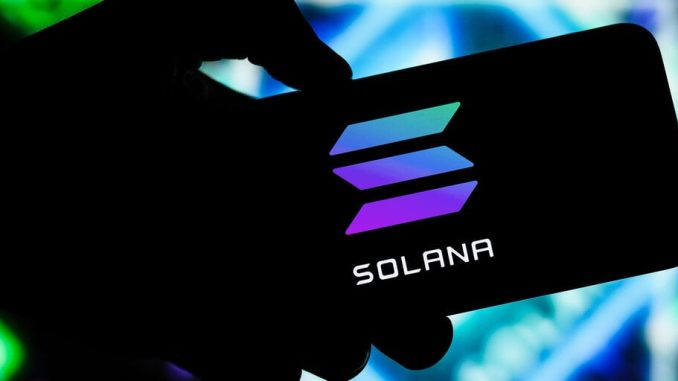
Editor’s note: Decrypt has retracted the original story, which took a hoax tweet about fake testimony by Caroline Ellison at Sam Bankman-Fried’s criminal trial as fact. Further, although the Solana security bug bounty program was brought up in light of the hoax, the program has existed for two years. Decrypt regrets the error.
Solana can’t seem to emerge fully from the shadow of its most notorious backer, Sam Bankman-Fried, especially as its name keeps coming up during his ongoing criminal trial. In the wake of a fake tweet claiming that the ex-FTX chief could disable it, a Solana representative reminded would-be hackers that the decentralized network offers security bug bounties ranging from $2 million to $5,000.
Rumors began circulating on Twitter that former Alameda Research CEO Caroline Ellison told federal prosecutors that FTX developers had the means to “turn on and off” the Solana blockchain at will. The tweet in question was a hoax, but it prompted questions and ridicule on Crypto Twitter about Solana– especially its purportedly decentralized nature.
Amid these discussions, Jacob Creech, the head of developer relations at the Solana Foundation, referenced the bounty for anyone who could find a flaw that could shut down the blockchain.
“FYI there’s a $400K reward for anyone that can find code that can turn off Solana. Please go ahead and find it,” wrote Creech in a tweet on October 12, referencing the bounty offered for bugs affecting Solana availability or “liveness.”
Creech told Decrypt that the security bug bounty program has been active for two years.
It is unknown how a single developer could feasibly shut down a decentralized blockchain, which is designed to prevent any one entity from having control over it. However, the bounty could be necessary to reassure the community that the system is safe from manipulation–and create further distance from FTX and Bankman-Fried.
Solana and its on-chain SOL token were once favorites of Bankman-Fried, who was a prominent supporter of their development. Before its collapse, FTX offered a marketplace for Solana NFTs and FTX invested in numerous Solana-related projects.
After FTX collapsed, Solana was rocked by the fallout. Many DeFi projects on Solana scrambled to cut ties with Serum–a consortium founded in August 2020 that included FTX, Alameda, and the Solana Foundation–out of fear their private keys could be compromised. Those keys were once housed within FTX.
Amid Bankman-Fried’s ongoing criminal trial in Manhattan, Solana has been mentioned numerous times by witnesses, something that appeared to cut into the token’s value last week. SOL, the eighth biggest cryptocurrency by market cap, has fallen 6% in the last week, according to data from CoinGecko.
Prior to the trial, a U.S. bankruptcy court in Delaware gave the greenlight for FTX to begin emptying its cold storage wallets of its remaining cryptocurrency, including a large stash of SOL. A court filing on September 11 showed that the failed exchange still held $1.16 billion worth of SOL, which is approximately a third of its $3.4 billion portfolio.
More recently, it was discovered by blockchain tracker Whale Alert that the trustees overseeing FTX’s bankruptcy are staking about $122 million worth of SOL. Staking is the process where holders deposit their Ethereum-based tokens to validate blockchain transactions in return for rewards.
The FTX estate is estimated to hold about $1.2 billion in SOL, and its possible sale has led to concerns that a flood of more tokens would drive down the price for existing ones. However, many of these tokens are still locked, meaning they can’t be sold immediately, limiting potential impact on the token’s price.


